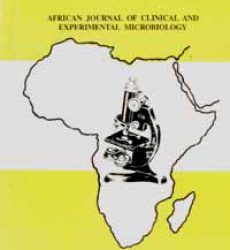Abstract
Objective: The objective of this study was to detect virulence genes of Helicobacter pylori (H.pylori) cagA, babA2 and hpa in gastric biopsies from patients with different stages of gastritis by polymerase chain reaction to correlate the presence of genes with the severity of the diseases.
Method: A total of 80 non repetitive gastric biopsies from antrum of the stomach were obtained from the patients and subjected to study for histological examination, unease activity, culture for H.pylori, and polymerase chain reaction studies of virulence genes cagA, babA2 and hpa.
Results: The most frequent detected gene by PCR was hpa (66.7%) and followed by cagA and babA2 (61.6%) for each. There was significant association between the three genes (P=0.0001). The study of the association between the virulence gene of H.pylori and different clinical symptoms revealed significant association of dyspepsia with cagA(P=0.001) babA2 and hpa (P=0.0001), regurgitation with cagA and babA2( P=0.002),vomiting with cagA and babA2 (P=0.01, P=0.002, respectively) and nausea with cagA and babA2 (P=0.0001, P=0.03, respectively). The virulence genes were detected in gastric ulcer. The degree of inflammation in histopathological examination was also statistically significant associated with the presence of virulences genes cagA (P=0.01), babA2 (p=0.0001) and hpa (P=0.0001)
The present study highlights the presence of virulence genes in H.pylori associated with gastric ulcer. The genes cagA, babA2 and hpa are prevalent among the strains affecting the patients. Moreover, these genes are associated with marked clinical and pathological severity. The genes are significantly associated with each other. Further studies are recommended to validate these findings.
Keywords: Gastritis, Genotypes, H.pylori, cagA, babA2, hpa, PCR
Download full journal in PDF below
Molecular study of Helicobacter pylori virulence genes CagA, Hpa and BabA2 in Egyptian patients

